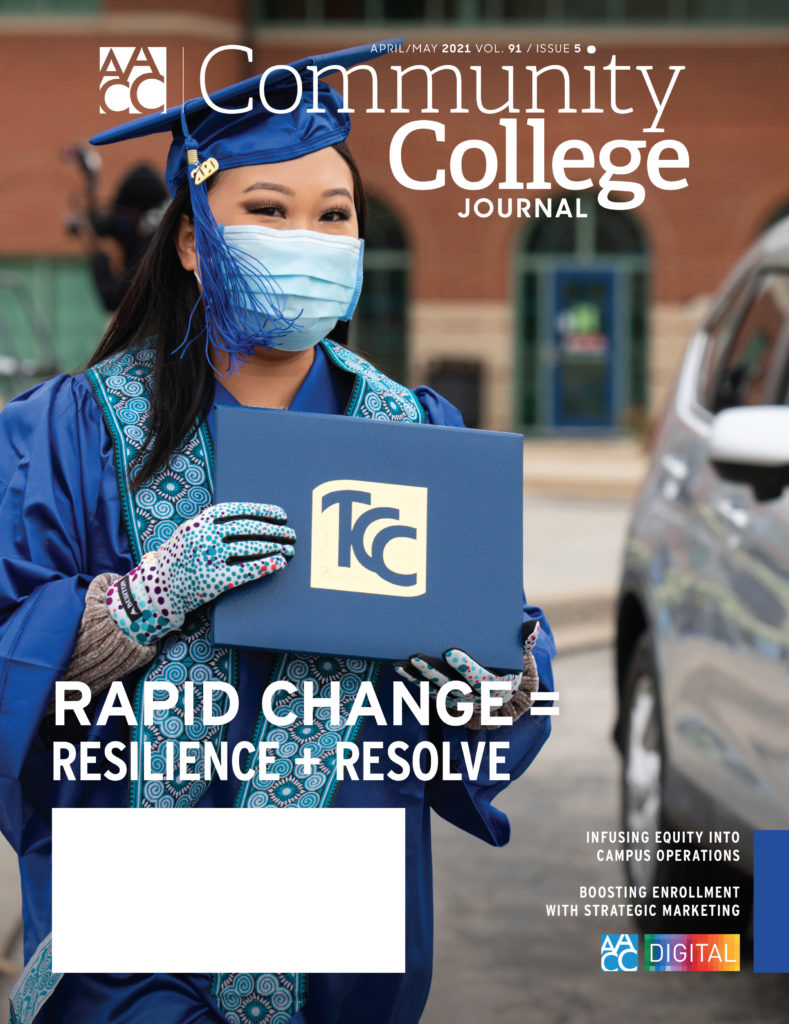Former students at South Texas College (STC) who stopped talking classes before finishing their degree have been getting text messages on their phone from an artificially intelligent chatbot, gently reminding then that the college has convenient programs to help them resume their studies.
“We’re trying to connect with students and prospects through the device they’re most comfortable with, at a time that is most convenient for them,” says Daniel Ramirez, the college’s director of public relations and marketing.
This article is an excerpt from the current issue of the Community College Journal, an integral source of information for community college leaders for more than 90 years. It is published by the American Association of Community Colleges.
These efforts appear to be paying off: The percentage of qualified leads who enrolled at the college jumped from 7% to 22% in just one semester.
Facing significant enrollment challenges as a result of the pandemic, community colleges nationwide have had to be highly strategic in how they market themselves to prospective students.
“The pandemic has created the need for community college students to reprioritize what they’re doing,” says Martha Parham, senior vice president of public relations for the American Association of Community Colleges (AACC). As a result, many have chosen to put their college plans on hold.
Recapturing these students while reaching new prospects requires creative solutions for meeting students’ most urgent needs, such as shorter-term, more flexible options and supplemental aid programs.
“All the marketing in the world isn’t going to help put food on the table,” Ramirez says.
IDing dropouts
A closer look at its enrollment data revealed that STC had no problem attracting new, continuing, and dual enrollment students before the pandemic, but reaching stopouts and transfer students was a challenge.
“We hadn’t developed any messaging to reach these groups,” Ramirez says.
To change that, last year the college began a strategic marketing campaign aimed at bringing stopouts back, in particular.
Ramirez and his marketing team used STC’s student information system to identify students who’d stopped taking classes within the last decade, then compared these students with National Student Clearinghouse data to make sure they hadn’t enrolled at another institution.
“We wanted to make sure we had the cleanest data possible, so we weren’t marketing to people we shouldn’t be,” he says.
Reaching them where they are
Once the team had a reliable list of stopouts, it began targeting these individuals with Facebook ads and direct mail campaigns highlighting programs that remove barriers to participation, such as shorter-term options that lead to faster completion.
The STC team also built customized landing pages on the college’s website with messages tailored to students who had paused their education.
“A 27-year-old student’s needs are much different than a first-time student’s,” Ramirez says. “Bringing them to the same entry point creates a disconnect.”
Successful marketing is about much more than just advertising a solution to your prospects’ needs, he observes. It’s about engaging with them and establishing a connection.
To help build these relationships at scale, STC uses an AI-based chatbot from AdmitHub to communicate with — and listen to — stopouts and other prospects. The technology helps the college reach prospects with many more interactions than its human staff could manage by themselves.
“We’re trying to recreate that in-person experience in a virtual world,” Ramirez says.


